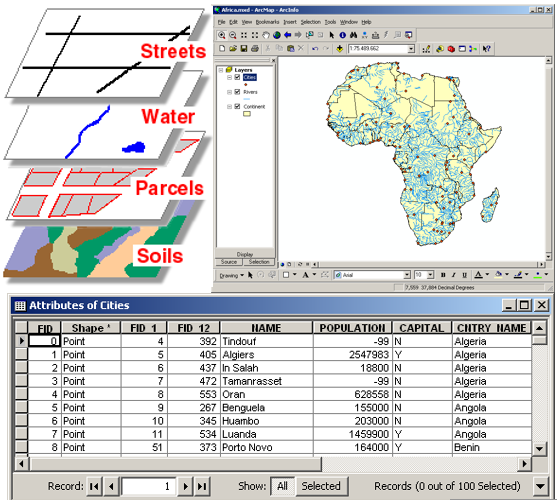Please complete the tasks to see your points.
In this task you were required to select layers or attributes that would be appropriate for a particular map or GIS.
To complete the task you had to have understood the basic structure of data in a GIS, which was introduced at the beginning of the task. The questions emphasized the importance of not only being knowledgeable about the software, but also being knowledgeable in areas such as the science behind the subject, or the target audience. It should have become clear that although there can be many possible layers and attributes, those which are most appropriate depend on the purpose of the map or GIS.
Since the questions in this OSA could not involve the direct use of ArcGIS software, they obviously do not fully represent the Forest Sciences curriculum of the GIS modules. However, they can give you a general sense of whether you have understood some of the aspects that must be taken into account when using a GIS. As the questions were geared towards using GIS for a specific purpose, they also give you an idea of the type of jobs that could await you, in case you choose this field of study.
